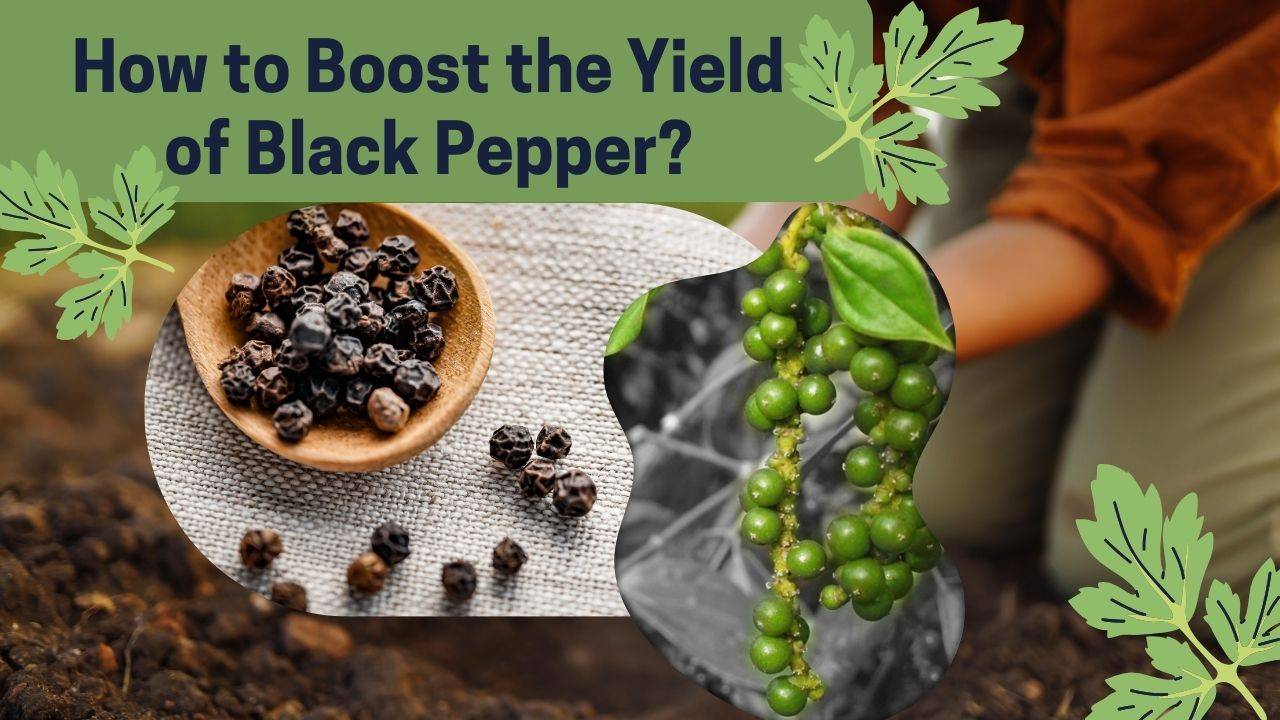
Black pepper, known as the "king of spices," has been a culinary staple for centuries. Its pungent aroma and bold flavour make it an essential ingredient in kitchens worldwide.
If you're a black pepper enthusiast or a farmer looking to enhance your pepper yield, this guide is tailored just for you. Let's delve into some creative and practical ways to boost the yield of this prized spice.
-
Choose the Right Variety
Just like any crop, the choice of the right black pepper variety is crucial. Opt for high-yielding and disease-resistant varieties that thrive in your specific climate and soil conditions. Varieties like Malabar and Tellicherry are renowned for their robust yields and distinct flavours.
-
Ideal Growing Conditions
Black pepper plants thrive in tropical climates with high humidity and well-distributed rainfall. Ensure your pepper plantation receives ample sunlight and is protected from strong winds. Adequate irrigation and well-draining soil are vital to prevent waterlogging, a common issue that can stunt growth.
-
Nurturing the Soil
Before planting, enrich the soil with organic matter like compost or well-rotted manure. Black pepper plants prefer slightly acidic to neutral soil with a pH range of 5.5 to 7.0. Regularly test the soil and amend it accordingly to create an optimal environment for growth.
-
Proper Spacing and Trellising
Black pepper plants are climbing vines that benefit from vertical support. Install trellises or other support structures to allow the vines to climb and access sunlight. Adequate spacing between plants is essential to prevent overcrowding, ensuring each plant receives sufficient nutrients and light.
-
Pruning Techniques
Regular pruning is a key aspect of maximizing black pepper yield. Prune the vines judiciously to encourage lateral growth and increase the number of flowering nodes. This not only boosts yield but also facilitates better air circulation, reducing the risk of diseases.
-
Fertilization Schedule
Develop a fertilization schedule based on the growth stages of the black pepper plants. Nitrogen-rich fertilizers are crucial during the vegetative phase, while phosphorus and potassium become more important during flowering and fruiting. However, be mindful not to over-fertilize, as this can lead to excessive vegetative growth at the expense of fruit production.
-
Pest and Disease Management
Implement a proactive pest and disease management strategy. Regularly inspect your plants for signs of pests or diseases and take prompt action to prevent their spread. Neem oil, insecticidal soap, and other organic solutions can be effective in managing common pests.
-
Harvesting at the Right Time
Patience is key when it comes to harvesting black pepper. Wait until the berries are fully mature and turn a bright red colour. Harvesting prematurely can negatively impact both the yield and the quality of the spice.
-
Post-Harvest Processing
After harvesting, meticulous post-harvest processing is crucial. Proper drying and curing of the pepper berries enhance their flavour and shelf life. Develop a systematic process to ensure consistency and quality in the final product.
-
Continuous Learning and Adaptation
Successful black pepper cultivation involves a continuous learning process. Stay informed about the latest agricultural practices, attend workshops, and engage with fellow farmers to share experiences and insights. Adaptation to new techniques and technologies can lead to improved yields over time.
By combining the art and science of black pepper cultivation, you can unlock the full potential of this spice and elevate both the quantity and quality of your harvest. Whether you're a seasoned farmer or a home gardener, these creative and practical tips will set you on the path to becoming a black pepper maestro. Happy cultivating!
















